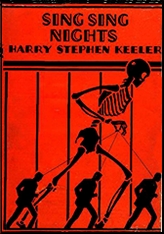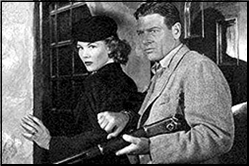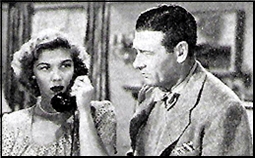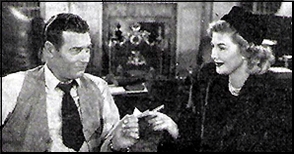Mon 9 Jul 2018
A Book! Movie!! Review by Dan Stumpf: HARRY STEPHEN KEELER – Sing Sing Nights // Film: 1934.
Posted by Steve under Mystery movies , Reviews[6] Comments
HARRY STEPHEN KEELER – Sing Sing Nights. Dutton, hardcover, 1928. Wildside, paperback, 2017
SING SING NIGHTS. Monogram, 1934. Conway Tearle, Hardie Albright, Jameson Thomas, Henry Kolker, Lotus Long, and Boots Mallory. Screenplay by Charles Logue and Marion Orth, “suggested by†the novel by Harry Stephen Keeler. Directed by Lewis D. Collins.

This is about as loopy as the average Keeler novel, but a bit more convoluted than most — most Keeler, that is. By normal standards… well, one can’t judge Keeler by normal standards and there you are.
The framework of Sing Sing Nights hinges on the premise that three well-known authors of popular fiction each decided—independent of the others – to murder an absolute bounder.
And that each of them decided to do it on the same night.
By the same means.
At the same time.
In the same place.
And that each of them hid there, unaware of the others’ presence till all three fired on him at the same exact instant. But not quite; there are only two bullets in the body. One of the killers is technically innocent of the crime.
Faced with this patent absurdity, and with three convicted men sentenced to death (on the same day, natch) who each not only believes he is guilty, but also wants to be guilty, the Governor of the unnamed state goes it one further: He gets all three together and hands them a signed pardon with a blank where the name is to be filled out. The three of them are to determine who is innocent and put his name on the Pardon.
Problem is, of course, they can’t for the life of them (literally!) figure out whudidn’tit, so they decide that each will tell a story, and free the author of the one their Jailer likes best.
If you think there maybe were some wild coincidences in that framework, wait’ll you get to the stories themselves. Keeler had a completely unique gift for spinning the wildest improbabilities with total straight-faced conviction. You or I could not commit the howlers Keeler wrote. Our minds could not conceive of the enormous coincidences that invest his stories, and if they could, we couldn’t submit them for publication without dying of shame.
But he not only managed, he did it with a clear-headed conviction and moral certitude that stagger the imagination. Reading his wild tales, one is reminded irresistibly of Galileo insisting that the Earth does too move around the Sun, or Gauguin painting the sky green: A genius convinced of the impossible finds some way to make it Truth.
I don’t normally reveal too much about the mysteries I read, but I can’t help recounting the highlights of the first tale in Sing Sing Nights. Readers are given WARNING that PLOT AND SOLUTION ARE GIVEN BELOW!!
Okay? Have all the kids left room? Well, the first tale hinges on the notion that the Hero attends a Costume Party in the same get-up as an International Criminal. And not only that, but also he has the same initials as the Thief. So when the Thief’s accomplice sends an urgent note to the party, the butler assumes it’s for him… all the more so as the accomplice happens to have the same initials as the hero’s friend!
Said accomplice is found dead a few pages later, and a chapter or two beyond, hero determines that the accomplice’s murderer was none other than…..The Butler! Who delivered the message to him at the party, and in so doing, recognized handwriting of the long-lost brother who cheated him out of a fortune fifty years ago!
END OF WARNING!
You gotta admire writing like that. Or if not the writing, at least the chutzpah that went into it.
And that ain’t all. The whole book is full of stuff like that, right up to an ending that must be seen to be disbelieved. I loved it.
As a footnote, Sing Sing Nights was filmed by Monogram in 1934. The film uses the same basic howler of a premise, but where the book delivered three tales of lunatic wonder, the movie settles for a few short vignettes showing what a cad the murdered man (Conway Tearle) was and how the others (Albright, Thomas & Kolker) acted quite rightly in gunning him down like the mongrel cur that he was. So there.
To its credit, Sing Sing Nights is competently acted and producer Paul Malvern uses his limited resources quite well in evoking exotic lands and climes on a restricted budget – aided by Cameraman Archie Stout, who went on to work regularly for John Ford. But these fall short of redeeming the leaden direction and perfunctory screenplay. This one is a dog, and a rather slow one at that.
I should also add that in 1935 Monogram used part of the second story in Sing, “Twelve Coins of Confucius” as the basis of The Mysterious Mr. Wong.
But that is a story for another day.



